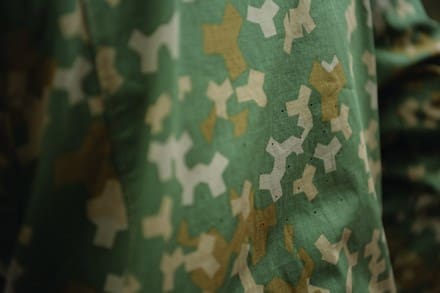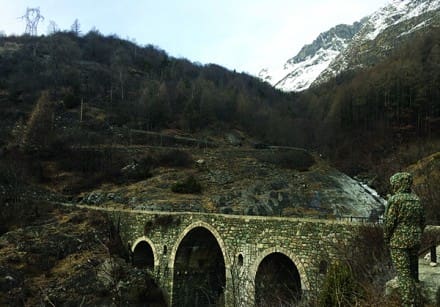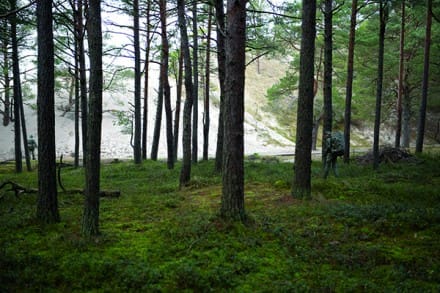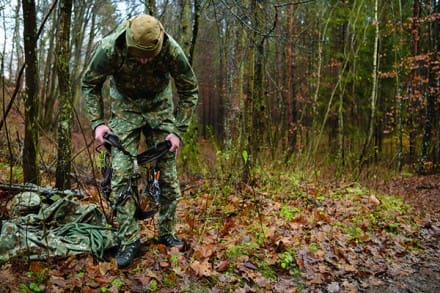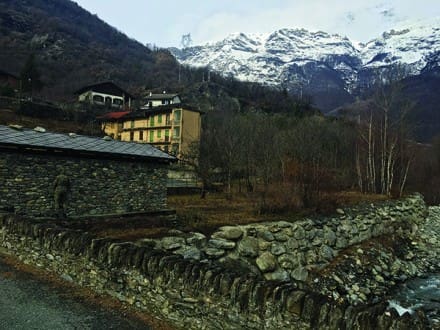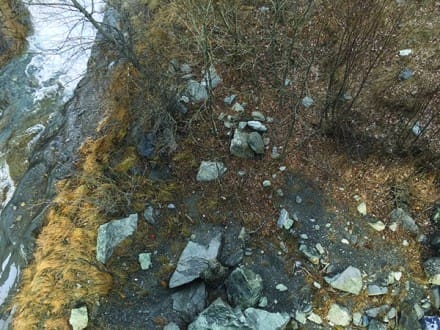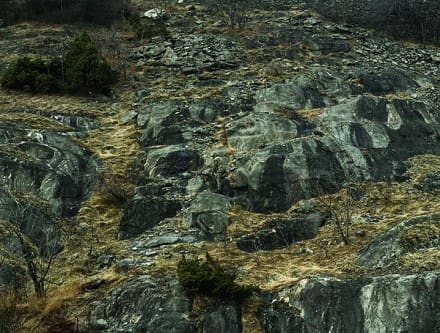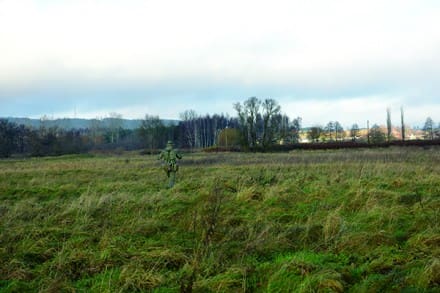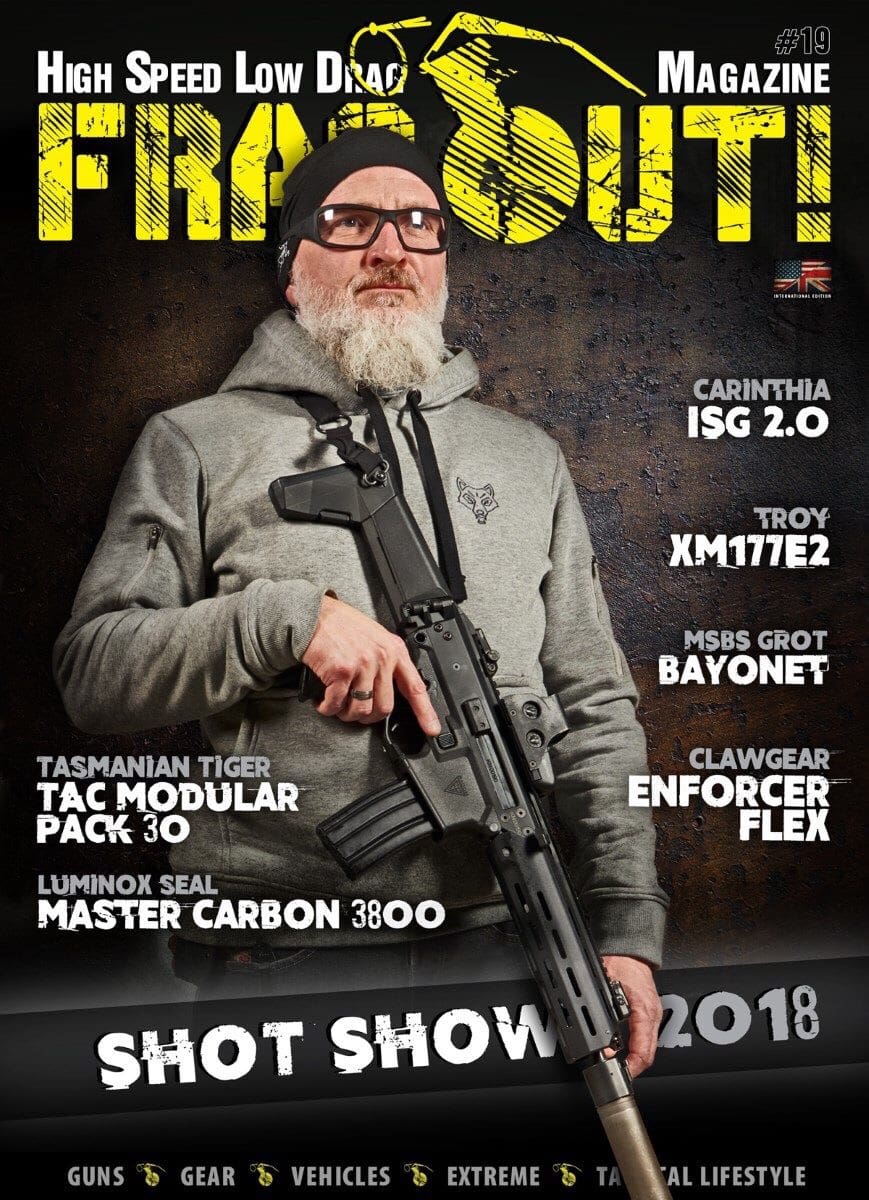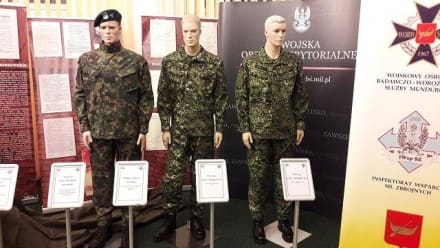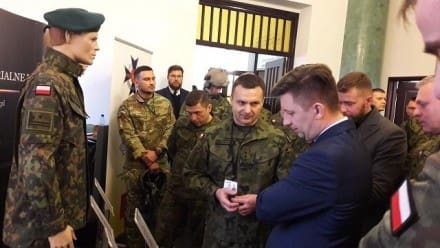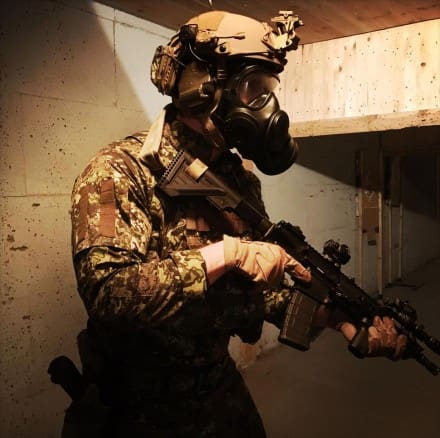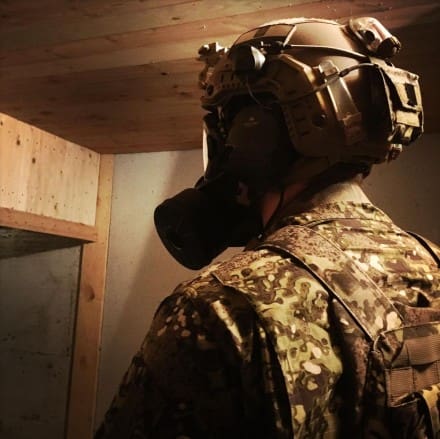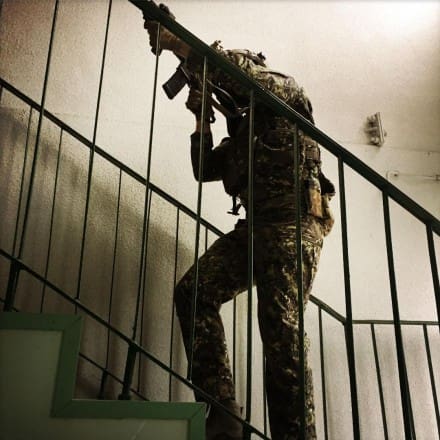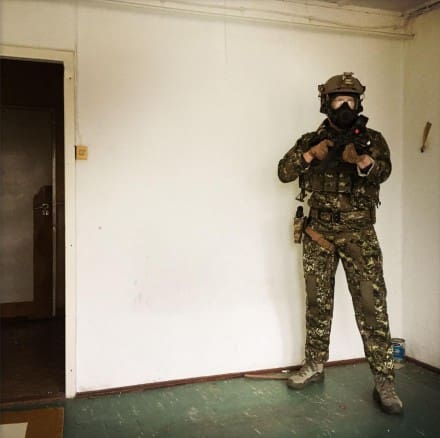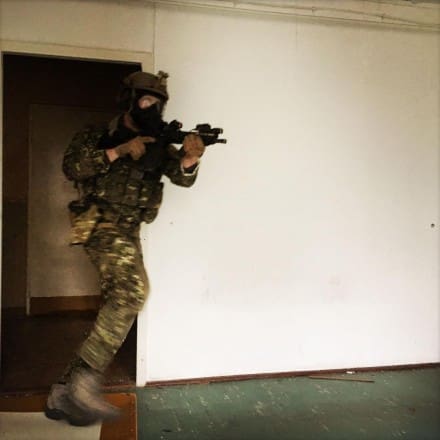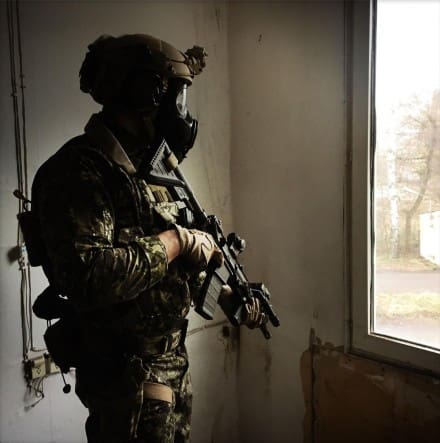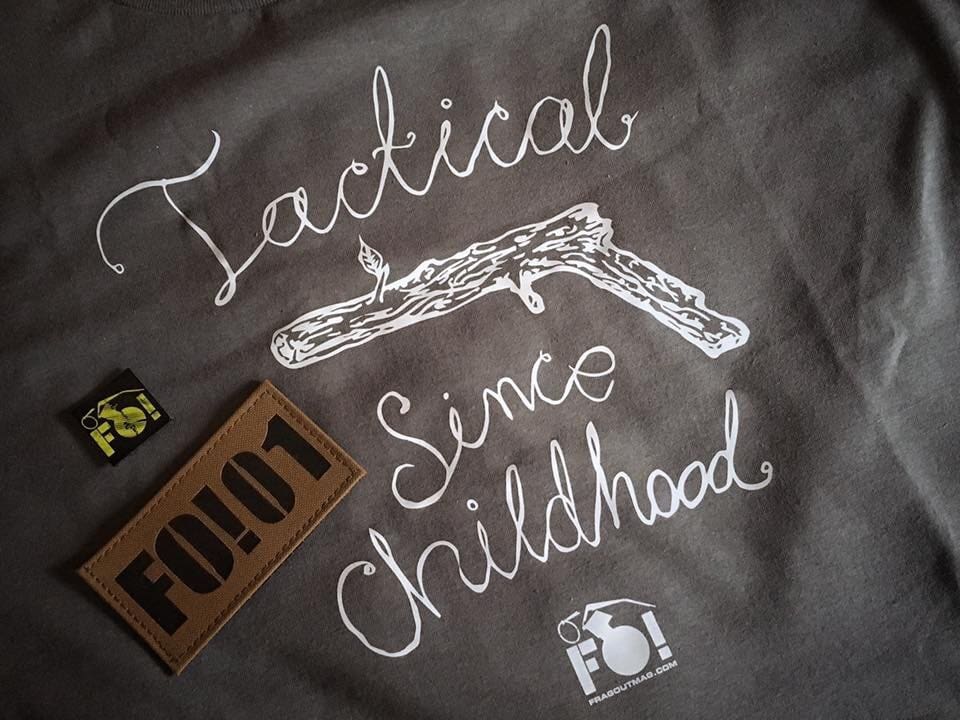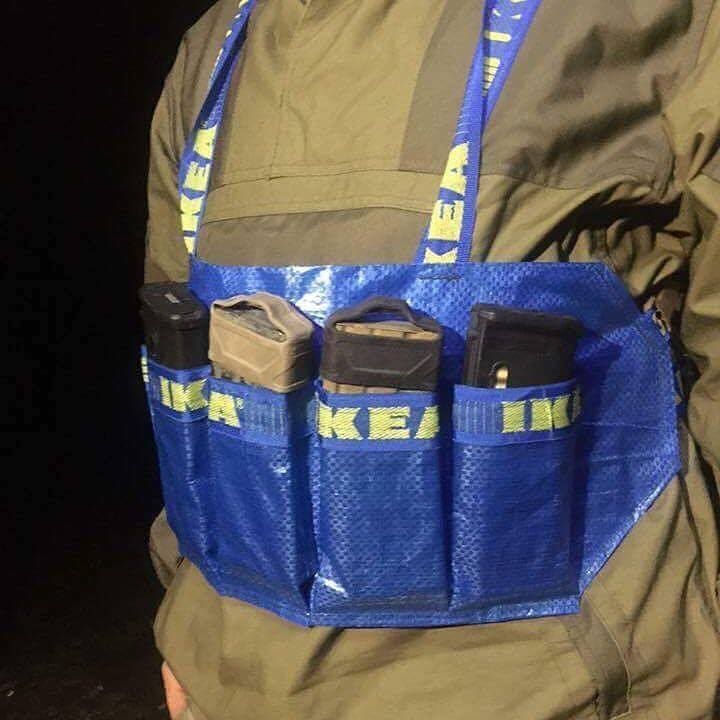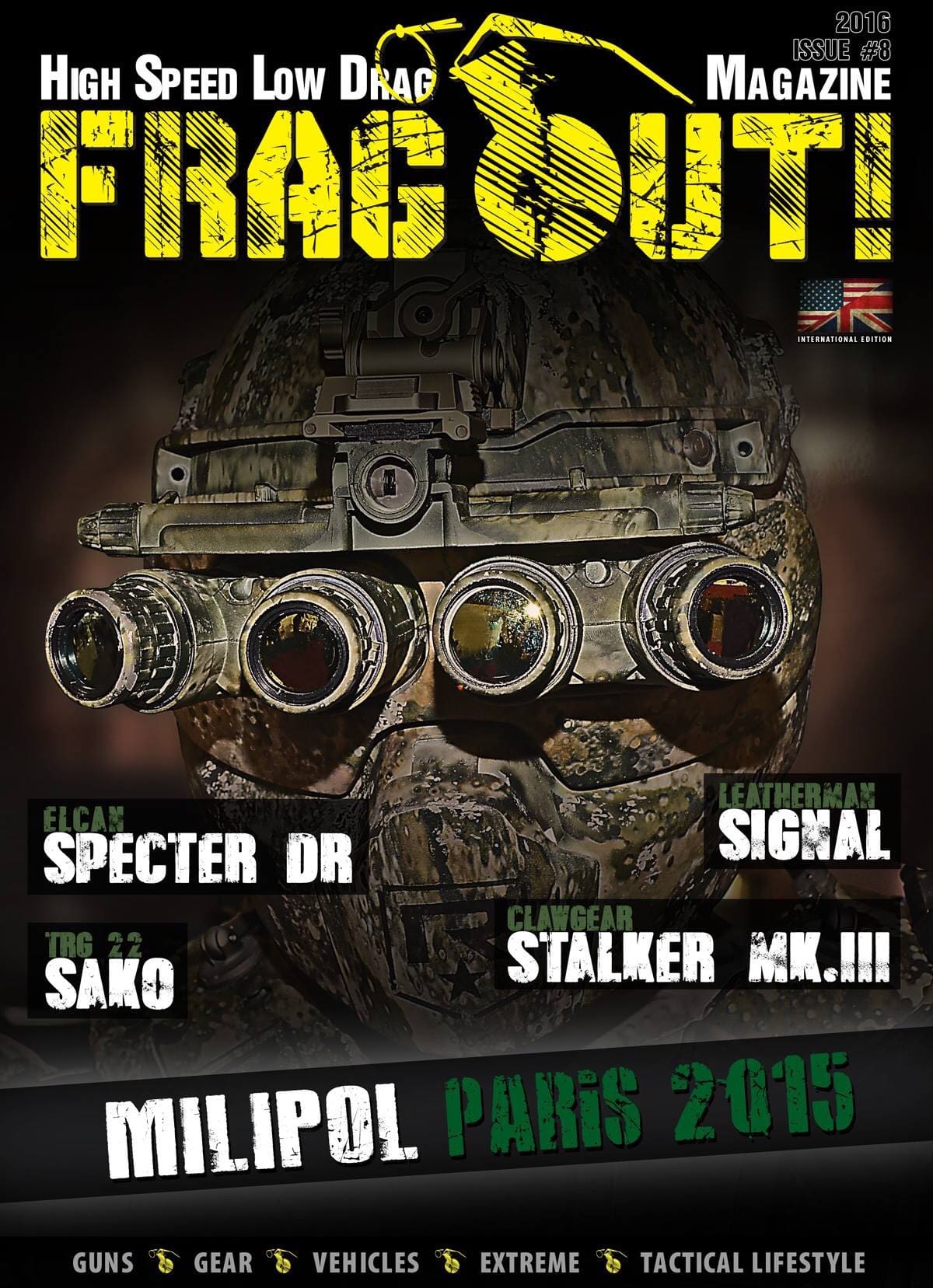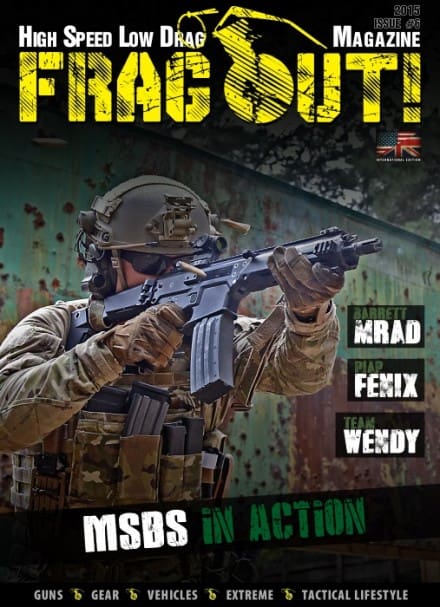As long as armies exist, war fighters have been looking for best solutions to blend in with the environment; starting with natural objects or vegetation in designated area and ending with full spectrum of artificial colour and material usage for camouflage means. Different areas and different terrains dictate specific rules. Every fighter must use a wide range of skill sets to blend in with the environment. Modern war dynamic process requires that one uses a universal camouflage colour, pattern and material shape capable of providing concealment in every environment.
Development of multi-terrain pattern is always a compromise between different types of camouflage that will provide adequate concealment of the operators against various backgrounds of different terrains. An even more complex task is to develop a pattern which will provide sustainable concealment over different distances within certain type of terrain and will not become a one-color spot, turning the fighter into an easy target.
Seeing how many variables need to be taken into consideration, the most important question is, how to develop a one-for-all camouflage?
This question was on the mind of Igors Sitvjenkins from the moment he joined the Army in 1997. He started with designing an innovative layering system for his fellow soldiers. After 15 years as an officer, having worked with NATO groups and cooperated with top military brands from soldier systems sector, he decided to start his own business: Sole Source and look into the camouflage issue in a more scientific way.
The mix of scientific thinking, military experience and passion for the perfect camouflage resulted in a book called BOOS – “Book of operational sculpturing”, where Igors team established system requirements for all the products they developed. The book became the base for identification and understanding of customer requirements – a unique and innovative approach towards satisfying the customer with most adequate product choices. BOOS also includes details behind the creation of the new camouflage pattern called TripleX and has become the base for all products designed and sold by Igors and his partners’ new brand, 3rd Alternative.
TripleX multi-terrain camouflage pattern has been developed based on 7 years of thorough research. The goal was to create a universal pattern providing concealment in three main operational terrains – woodland, urban and mountainous, while also fit for the transitional terrains.
The biggest challenge presented itself in the actual camouflage color and contrast that helps to blend into the forest areas and mountainous terrain. Since camouflage is most effective at distances of above 50 m, the main focus was on the right colors of pattern elements. TripleX camouflage colors and their interaction truly allow for a multi-terrain coverage. The next factor was the shape, size and ratio of pattern elements. In TripleX a mix of elements with different colors is used: dominate greenish triplex element with star size 1.4 cm, brown triplex element with star size 1.4 cm, khaki triplex element with star size 0.8 cm and grey triplex element with star size 0.8 cm. Research shows that shapes in the range of 0.8-1.4 cm provide the best blend-in capability in different terrain, while not turning the pattern into a one spot color.
TripleX is based on Euclid’s geometrical element that allows to shape it in different irregular forms and build a pattern that has horizontal and vertical lines. This way, it blends into nature or urban environment while keeping it digital, with the ability to converge with surrounding elements and light.
TripleX pattern – closer look. ROCK jacket ventilation laser cut holes
TripleX pattern – general look mountain terrain
TripleX in WOODLAND terrain
A common mistake is the belief that forest is just dark green; that is why past generation of camouflage patterns intended to mimic woodland were most often dark green with black spots. There should be a proper mix of the colors and element shapes in order to provide appropriate concealment. In the TripleX multi-terrain pattern the main element is the greenish background with grayish coloring. This allows for the most effective blend into wooden areas, leaf tree areas as well as conifer tree areas, dense or sparse forests. The tone is called misty or “brume forest” and gives every fighter the freedom of movement in any forest terrain.
Another inspiration for the colours was the tone of wild animal fur in autumn, which when mixed with the grayish color provides the most optimal spectrum for concealment. With the focus on each element’s size ratio, the blend of colours reduces the possibility of appearing as spots or creating a shadow effect not in line with the environment.
TripleX pattern – woodland terrain, close distance
TripleX pattern – woodland terrain, close look (late autumn)
TripleX in URBAN areas
Tactical doctrine stresses that urban combat operations are conducted only when required and that built-up areas are isolated and bypassed rather than engaged in costly, time-consuming acts. Adherence to these precepts, though valid, is becoming increasingly difficult as urban sprawl changes the face of the battlefield. Major urban areas in various countries host industrial bases, transportation complexes, economic institutions, and political and cultural centers – the power and wealth of each country. The denial or capture of these centers may yield decisive psychological advantages that frequently determine the success or failure in a larger conflict. Villages and small towns will often be caught up in the battle because of their proximity to major avenues of approach or because they are astride lines of communications that are vital to sustaining ground combat operations. Urbanization is a complex, multifaceted process influenced by many factors including a nation’s cultural development, its economic resources, and its industrial capacity. Although its form varies from region to region, urbanization is characterized by a general pattern of changes in land usage and the spread of man-made features across natural terrain. Tactical terrain analysis has traditionally considered some elements of the urban environment such as the allocation of land to agriculture or forestry and the distribution of railway or road networks. However, the focus has been on natural terrain elements. In Europe and other urbanized areas of the world, increased awareness of the effects of man-made features on the overall tactical scheme is necessary. How urban terrain elements impact on operations is an important consideration in determining tactical options.
Expanding urban development affects military operations as the terrain is altered. The increased population and accelerated growth of cities have made the problems of combat in built-up areas an urgent requirement for the military, law enforcement, special security forces. This type of combat cannot be avoided. The makeup and distribution of smaller built-up areas as part of an urban complex make the isolation of enemy fires occupying one or more of these smaller enclaves increasingly difficult. Urban terrain is expected to be the future battlefield in Europe and Asia with brigade- and higher-level commanders focusing on these operations. The closeness of urban operations increases the likelihood that the enemy will detect operators of the unit.
Because some urban areas offer poor concealment and cover, the enemy is most likely to detect soldiers moving through urban areas. Camouflage effectiveness in urban terrain is therefore dictated by color of the pattern elements as much as their size ratio. The right mix allows to blur in and not stand out against the background of the built-up area. This is the reason why the TripleX pattern has universal colour tones that change in the overall visual spectrum based on background and light intensity.
TripleX pattern – urban terrain, close distance
TripleX in MOUNTAIN terrain
With approximately 38% of the world’s classified as mountains, the Army must be prepared to deter conflict, resist coercion, and defeat aggression in mountains as much as in other areas. Mountains exist in almost every country in the world and almost every war has included some type of mountain operations. This pattern will not change; therefore, soldiers will fight in mountainous terrain also in future conflicts. Although mountain operations have not changed, several advancements in equipment and transportation have increased the soldiers’ capabilities. The identification and proper use of the cover and concealment provided by mountainous terrain are fundamental to all aspects of mountain operations.
TripleX pattern – typical rocks, close distance, look from top
The ridge systems may provide covert approaches through many areas that are hidden from observation by the vegetation and relief. The difficulties a force encounters in finding available cover and concealment along ridges are fewer than those on the peaks, especially above the timberline. Uncovered portions of an approach leave a force exposed to observation and fire for long periods. The enemy can easily detect movement in this region. Although mountainous terrain generally permits excellent long-range observation and fields of fire, steep slopes and rugged terrain affect a soldier’s ability to accurately estimate range and frequently cause large areas to be hidden from observation. The existence of sharp relief and dead space facilitates covert approaches, making surveillance difficult despite such long-range observation. Mountainous terrain is where urban spectrum mixes with forest spectrum depending on types of rock and forests. That is why TripleX can provide concealment and blurring with the surrounding in high altitude mountain terrain, at the bases of mountains with vegetation or at the highlands.
TripleX pattern – typical rocks, distant look
TripleX in TRANSITIONAL terrain
Very often, the combat terrain is transitional and difficult to categorize as specific operational terrain. In any terrain and environment however, the capability of blending in is dictated by the light and shadow effects, and the intensity of light, regardless if artificial or natural. Main benefit of the TripleX camouflage is the light effect and reflection of the pattern. TripleX provides camouflage with chameleon effect, with different contrast depending on light intensity. When the surrounding background changes, TripleX does the same and changes contrast together with the environment in order not to stand out as too bright or too dark spots, especially during morning and evening light.
TripleX pattern – transitional terrain, open field, close distance
MULTI-TERRAIN application
The battlespace is evolving at high speed, making it increasingly difficult for soldiers to remain in hiding. Most dangerous are all kinds of technical observation and surveillance devices, from high resolution binoculars and thermal imagery to air and radar surveillance. That is the reason why camouflage color, material and pattern shape are crucial factors behind the freedom of movement in various environments.
All those reasons pushed Igors and his team to change the approach to camouflage and base the new pattern on the results of optical experiments. They succeeded in creating a blend of patterns and colours capable of providing almost ideal concealment in modern warfare environment. An added benefit is that all kinds of popular camouflage patterns are already set in our minds and visual memory, making the TripleX gear even more difficult to distinguish from the surroundings.
Within the different ranges, TripleX provides a disruptive effect in any possible terrain, providing every operator with concealment and a guarantee against fast detection by visual surveillance. Naturally, the maximum effect is gained when every part of the gear and clothing is of same pattern.


